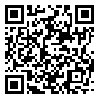Volume 5, Issue 2 (autumn-winter 2018)
DSME 2018, 5(2): 48-70 |
Back to browse issues page
Abstract: (4247 Views)
Introduction: Today, the main concern of health education system is neglecting the quality of materials and the efficiency of students. Matching, comparing and analyzing different dimensions of programs with those of other countries would be helpful in solving this problem. This study was conducted with the aim of comparing the Ph.D. Nursing Program in Iran and Toronto.
Methods: This descriptive study was carried out using a comparative approach and Beredy model. The relevant information was collected from two universities and classified according to the interpretation and adjacent stages. Then, the similarities and differences were analyzed.
Results: Both programs are full-time, in-person, and emphatically student centered. There are structural differences between the programs; but there are similarities during the educational period and the content of some courses, such as research education, research proposals and critique studies in Toronto, with the methodology of quantitative-qualitative research and critique of papers in Iran. Students' Proposal writing course faces similar challenges. Toronto does not focus on the article extracted from the thesis, but in Iran, it is considred necessary.
Conclusion: Toronto's curriculum has been updated. In Iran, considering the increasing needs of graduates and the expectations of graduates, is necessary to make general changes. Therefore, it is recommended that in addition to the suggestions given in various texts to modify the program, the course in Iran should be reviewed in general terms and content.
Citation: Roshanzadeh M, Tajabadi A, Aghaei M. The educational system and curriculum of Ph.D nursing students in Iran and Toronto, Canada: a comparative study. Journal of Development Strategies in Medical Education 2018; 5(2): 40-62.
Methods: This descriptive study was carried out using a comparative approach and Beredy model. The relevant information was collected from two universities and classified according to the interpretation and adjacent stages. Then, the similarities and differences were analyzed.
Results: Both programs are full-time, in-person, and emphatically student centered. There are structural differences between the programs; but there are similarities during the educational period and the content of some courses, such as research education, research proposals and critique studies in Toronto, with the methodology of quantitative-qualitative research and critique of papers in Iran. Students' Proposal writing course faces similar challenges. Toronto does not focus on the article extracted from the thesis, but in Iran, it is considred necessary.
Conclusion: Toronto's curriculum has been updated. In Iran, considering the increasing needs of graduates and the expectations of graduates, is necessary to make general changes. Therefore, it is recommended that in addition to the suggestions given in various texts to modify the program, the course in Iran should be reviewed in general terms and content.
Citation: Roshanzadeh M, Tajabadi A, Aghaei M. The educational system and curriculum of Ph.D nursing students in Iran and Toronto, Canada: a comparative study. Journal of Development Strategies in Medical Education 2018; 5(2): 40-62.
Type of Study: Review |
Subject:
Special
Received: 2017/12/9 | Accepted: 2018/03/13 | Published: 2018/11/3
Received: 2017/12/9 | Accepted: 2018/03/13 | Published: 2018/11/3
| Rights and permissions | |
 |
This work is licensed under a Creative Commons Attribution-NonCommercial 4.0 International License. |



